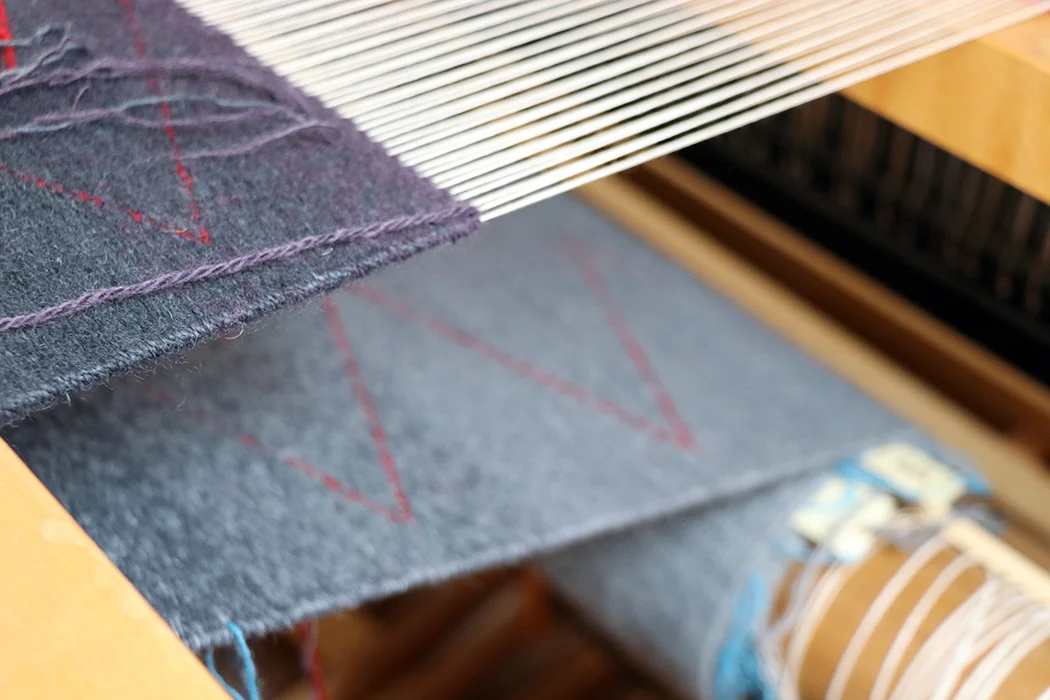I had the great joy of seeing Bhakti Ziek’s show at Form & Concept Gallery in Santa Fe this week. The show is a retrospective of over 50 years of her weaving life.
Bhakti’s work is full of narrative. The large installation piece that anchors the show, Wheel of Life: The Passing on of Knowledge was her thesis project at Cranbrook Academy of Art in 1989. The work uses various dye techniques and a lampas structure. Each panel is 44 x 33.5 inches. There are many stories behind this work including a reference to her father who was a cello player. The piece’s main narrative about Christian monks in 552 AD who relieved China of some of their silkworms by hiding them in their hollow walking sticks thus ending China’s silk supremacy. The story of this work has a spy-thriller feel to it.







